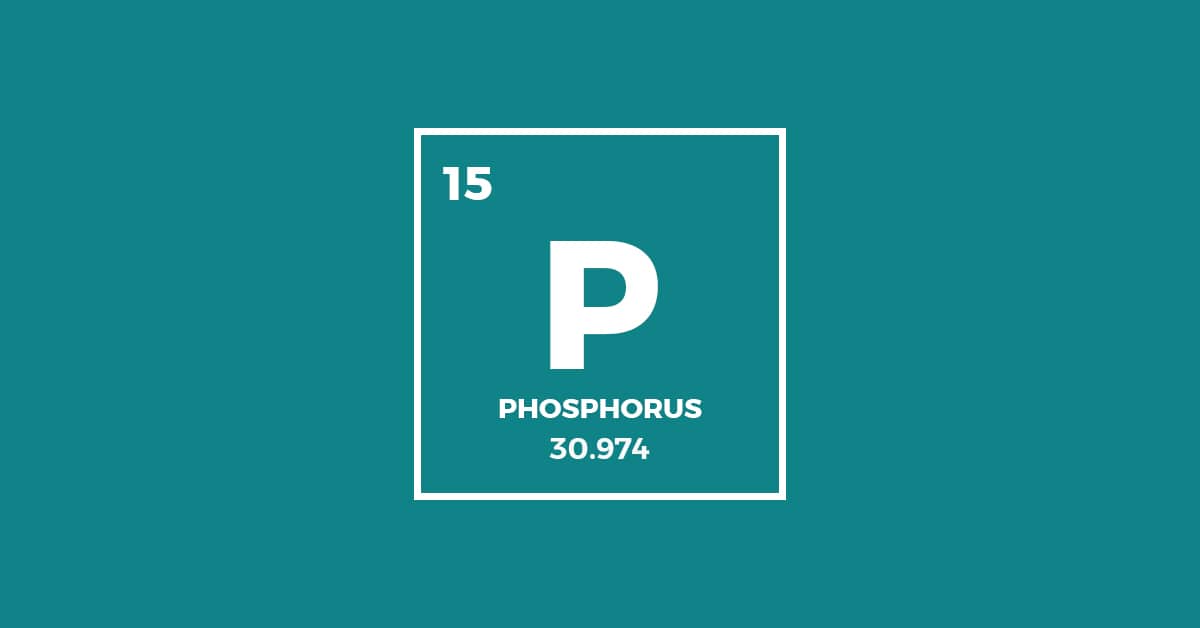5-minute read•July 19th, 2018
Phosphorus certainly knows how to attract attention. It was discovered by an alchemist when he was boiling his own pee on a quest for the Philosopher’s stone. Not only was it the 13th element to be discovered, it also glows in the dark and tends to burst into flames, which is why it’s sometimes referred to as the devil’s element.
Despite its explosive reputation, phosphorus in your diet will not harm you. To the contrary – it’s an essential element of healthy nutrition and it’s responsible for key functions in your body. Here’s what you need to know about phosphorus.

Short on time?
Best known for:Keeping your bones and teeth healty
Good sources: Most abundant in dairy products, cereal, meat and fish.
Adequate intake (AI): 550 mg/day. No tolerable upper intake limit (UL) is set, but some people experience discomfort at intake levels over 750 mg/day.
Good to know: Some foods, like beans, peas, cereals and nuts contain phosphorus in the form of phytic acid, which is only absorbed at 50% by your body.
Phosphorus in Jake:
Jake Light and Original: 33-39% of AI
Jake Sports: 25-39% of AI
Vitaminbars: 50-51% of AI
What is phosphorus?
After calcium, phosphorus is the second most abundant mineral in the human body: about 750 grams of our weight is phosphorus. About 85% of the phosphorus in the body is stored in our bones and teeth.
The concentration levels of phosphorus in the blood are tightly controlled. This means that a sudden decrease or increase in your phosphorus intake won’t cause an equivalent fluctuation in the phosphorus concentration in your blood.
Phosphorus and calcium levels in the blood are closely interrelated. For example, if your calcium intake falls, this triggers a chain of processes to ensure that more phosphorus and less calcium are excreted from the body, thus maintaining a stable ratio of both.
Health benefits of phosphorus
Together with calcium, phosphorus is a major component of our bones and teeth. It also has a number of other functions in the body.
The main functions of phosphorus are:
- Formation of bones and teeth: Phosphorus is an integral part of bones and teeth, giving them strength and rigidity.
- Cellular energy transfer: Phosphorus is a structural component of cell membranes and it’s required for the production and transfer of energy between cells.
Phosphorus-based compounds are widely used in food processing, which has raised some concernsSource: Deutsches Ärzteblatt International, especially since their inclusion on food labelling is not consistently regulated. This may lead to excessive phosphorus intakes and negative health consequences. The European Food Safety Authority is currently investigating whether and to what extent this should be a concern.
How much phosphorus do you need?
Healthy adults need 550 mg of phosphorus per day.This amount reflects the adequate intake (AI) set by the European Food Safety Authority (EFSA). That’s something like 28 medium-sized mushrooms.
Phosphorus in foods
Phosphorus is available in a variety of foods. The richest sources are dairy products, cereal, meat and fish. Phosphorus is also part of many food additives, although you are unlikely to find it on the food labelling.
The best sources of phosphorus are:
| Food | AI (%)* | Phosphorus (mg) |
|---|---|---|
| Pumpkin seeds (60 g) | 123% | 676 |
| Sardines, canned in oil (75 g) | 67% | 368 |
| Mushroom, portobello, raw (125 g) | 23% | 124 |
| Milk, whole (125 ml) | 20% | 109 |
| Potato, cooked (100 g) | 8% | 44 |
* Based on the adequate intake (AI) established by EFSA for healthy adults (550 mg/day)
In some foods, like beans, peas, cereals and nuts, phosphorus is present in the form of phytic acid or phytate. Humans lack the enzymes necessary to extract phosphorus from phytate, which means that only about 50% of it is absorbed by the body. Phytic acid also prevents the absorption of calcium from food.
What if you’re not getting enough phosphorus?
A phosphorus deficiency is very rare, as phosphorus is available across a big variety of foods. Therefore, you would be most likely to become phosphorus-deficient only if you are affected by severe malnutrition.
How much phosphorus is too much?
It’s very rare to reach a dangerous concentration of phosphorus in your blood, known as hyperphosphatemia. This is due to the rigorous process of phosphorus regulation in your body. As a result, there is no official tolerable upper intake level (UL) set for phosphorus. Available data show that healthy individuals can tolerate intakes up to at least 3000 mg per day without severe health consequences. However, some people might experience gastrointestinal discomfort, nausea and vomiting with intake levels starting from 750 mg/day (136% of RDA).
Take-aways
These are the three things to remember about phosphorus:
- You need phosphorus for the formation of your bones and teeth.
- Phosphorus can be found in a variety of foods, with the best sources being dairy products, meat, fish and cereal.
- Under normal circumstances, you’re unlikely to become phosphorus deficient.
Afraid to miss out on essential nutrients your body needs? You can always take our Jake meal replacement shakes or one of our delicious meal replacement bars.






